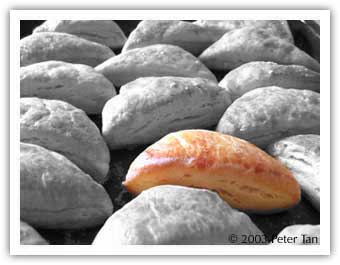
I am not fond of spicy curries. It burned the insides of my mouth and upset my stomach. However, I love the aroma of coconut curries. Mum had just the right recipe for this finicky preference of mine – Lemongrass Fish Curry. It is rich, sans the spiciness; and the lemongrass imparts a distinct piquancy.
What’s more? Apart from being delicious, the lemongrass possess medicinal properties. It is traditionally used to expel wind in the body. There are lemongrass scented candles and lemongrass balms to repel pesky mosquitoes and other insects. Aromatherapists use its essential oil for a number of treatments including sagging skin and stretch marks. I do not know if it works. I do not have stretch marks to apply it on.
Mum would cook this curry as a remedy whenever I complained that my wrists were aching. Sometimes the pain got so bad that I could not flex them. This curry cured the ailment, until the next bout, that is. Now, I swear by it. I do not know the exact ingredients Mum used but this tasted just like how she used to cook it. Here is the recipe:
300g fish fillet, cut into 5cm strips
20 stalks lemongrass, thinly sliced
10 shallots, chopped
3 cloves garlic, chopped
5cm portion turmeric, chopped
3 red/green chillies, seeded and sliced
3 tbs. Cooking oil
salt, to taste
1 and 1/2 cup coconut milk
1 cup water
Heat oil in wok; fry shallots, garlic and turmeric, stir until they become fragrant. Add lemon grass and chillies; stir until fragrant. Add fish, salt and water; simmer until fish is cooked. Add coconut milk; simmer until gravy is slightly thick. Serve with rice.


